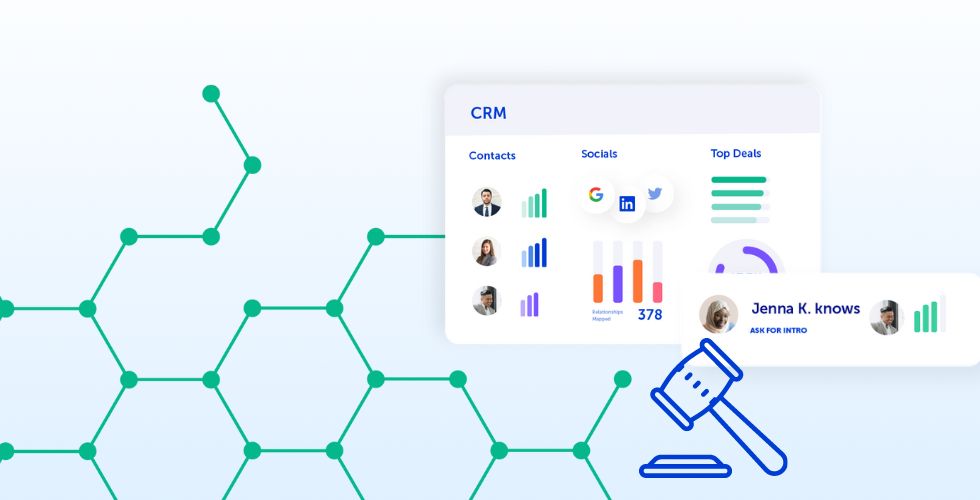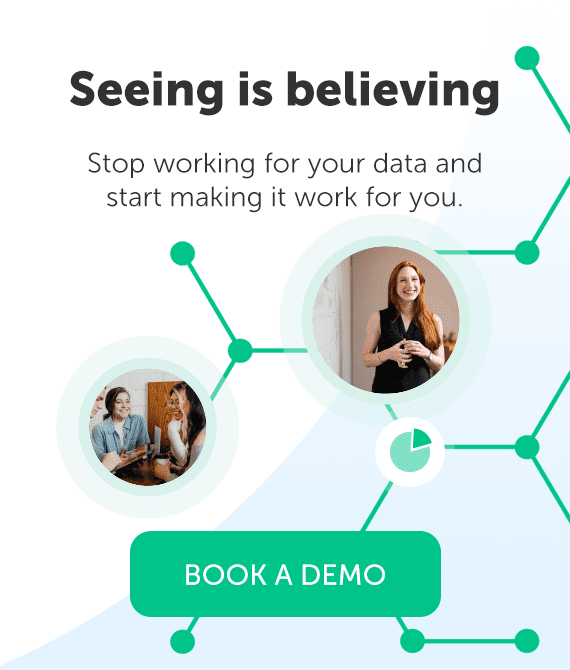Never has it been harder—nor more important—to choose the right CRM for AEC firms.
The architecture, engineering, and construction (AEC) sector is still struggling to re-establish some form of equilibrium following the seismic changes that have swept across the industry over the past 18 months.
The pandemic caused this sector to lose an estimated $60.9 billion in GDP and over 1.1 million jobs in 2020, “effectively wiping out two years of GDP gains and four years of job gains,” according to Deloitte’s 2021 Engineering & Construction Industry Outlook.
Then there’s the matter of pandemic-induced disruption to traditional commercial office buildings and workspaces. All signs indicate that for the foreseeable future, we can expect to see less intensely used central offices as work-from-home (WFH) arrangements become entrenched as the norm.
In response, companies are focused on creating spaces geared toward communal work and collaboration.
At the same time, interest in mixed-use residential spaces is showing an uptick as homeowners seek convenience and entertainment closer to home as their typical commuting patterns no longer compel transportation.
- Does it Embrace “Remote-first” Engagement and Collaboration?
- Can I Tie My Outreach Activity Tightly to Desired Interactions?
- Does it Enable “Digital Succession Planning?”
- Can it Automate Research and Intelligence-gathering?
- Will It Help Me Clear AI Adoption Hurdles?
New Paths to Profitability
While these trends have required AEC businesses to pause and rethink their paths to profitability, pandemic-related disruptions have also threatened to derail these organizations’ CRM strategies.
According to the Hinge Research Institute, some 61% of AEC firms report that their business development and sales efforts were hampered during COVID-19.
That’s because the pandemic upended normal office routines in which sales, marketing, and business development teams would routinely share small talk and updates regarding customer relationships, new deals closed, bids in play, and more.
The CRM aftershocks of the pandemic shine a light on the criticality of having real-time insights into what others in business-winning roles are doing and an understanding of precisely who is engaging with which customers and why.
So, where to from here? Has the traditional relationship intelligence chain been irreparably broken? With the world becoming more focused on engagement via online channels, how can AEC firms keep themselves at the forefront of buyers’ and prospects’ minds when traditional methods of engagement are no longer available?
The good news is that, when thoughtfully planned and executed, digital CRM approaches and tools can help fill the gap.
Success lies in selecting the right base platform and overlaying it with advanced CRM functionality.
Here are our top five questions to ask when evaluating any new digital CRM solution investment:
1. Does it Embrace “Remote-first” Engagement and Collaboration?
The first criteria to consider is whether a solution is intentionally designed to support the new hybrid office and WFH scenarios in which teams can no longer rely heavily on traditional face-to-face engagements and events.
Your solution should be able to passively track and capture all customer interactions and engagements – everything from emails, phone calls, and meetings to connections forged and relationships cultivated via targeted marketing campaigns and customer events.
Importantly, this data should be auto-fed into a single repository, updated in real-time, and be accessible to all relevant internal stakeholders.
When you inject this level of granularity into your activity tracking, anyone in your firm can see the current status of all projects or customer relationships without the need (or ability) to walk over to someone and ask about it. It also allows you to set up virtual teams based on relative relationship strength scores. And finally, you can merge new insights with existing and historical relationship intelligence to explore new opportunities and improve your cross- and upsell capabilities.
Better still, if the solution facilitates low-touch, frictionless internal connections (via integration with your email server), people can remotely reach out to their colleagues with questions or even set up meetings to brainstorm engagement strategies with just a few clicks.
2. Can I Tie My Outreach Activity Tightly to Desired Interactions?
The best digital CRM tools use advanced AI to score account engagement levels based on the data they gather. This allows you to prioritize your outreach and marketing tactics depending on the ideal type of interaction you seek.
For example, for a webinar or in-person event that includes a lunch, you’re going to want to target accounts with which you have an established and positive engagement track record. For leads with lower engagement levels, you might decide to simply add them to nurture campaigns to begin stimulating more interest in your services.
3. Does it Enable “Digital Succession Planning?”
A Hinge Research Institute study showed that over 60% of AEC firms expect to fill open positions with hires from their industry competitors. That makes a powerful statement about the current levels of fluidity and convergence in the industry. What you might not know is that digital CRM tools can mitigate the impact of any future employee attrition.
Because advanced CRM tools can uncover, track, and capture every relationship and interaction that customer-facing employees have within accounts and prospects, they can avoid valuable customer relationship insights simply leaving the building along with departing employees.
What’s more, new hires stepping into vacant roles have immediate access to historical account engagements. This helps them get up to speed quickly rather than relying on outdated or anecdotal information. The result? They become productive and profitable almost out the gate.
Advanced CRM tools can also use AI to “stack-rank” employees so that when someone leaves, the next-best person is quickly identified and may be put in place.
4. Can it Automate Research and Intelligence-gathering?
High-growth AEC firms do more research on their target audience and leverage more sales and marketing automation than their low-growth peers.
The best CRM tools can research and compile configurable and automated pre-meeting digests and deliver them directly and timeously to the inboxes of customer-facing personnel. This could include the latest company news, funding announcements, stock information, summaries of other recent engagements with others in the firm, and related potential CRM opportunities.
Not only does this reduce the amount of time these employees need to spend on pre-meeting research, but it also enhances the depth and relevance of the information they’re able to access. Instead of surface-level insights they would uncover via a quick Google search, they’re presented with the insights most pertinent to the account and their stakeholder(s).
5. Will It Help Me Clear AI Adoption Hurdles?
Nearly 34% of high-growth AEC firms believe they’ll encounter challenges in adopting AI over the next 3–5 years. What should these firms consider when evaluating AI CRM tools?
The myriad of potential use cases for AI often leaves business leaders feeling overwhelmed and unsure of how to take advantage of it. Another common thorn in their sides is low levels of internal technology adoption. For employees to start using new AI-based technologies, they need to have a clear understanding of how they’ll change their jobs for the better. If these reasons aren’t communicated or showcased to people, they’ll fail to embrace new tools and ultimately disregard them.
At Introhive, we recommend a “carrot rather than stick” approach to driving up employee buy-in and adoption of digital CRM tools.
You have to be prepared to meet your users where they work and eliminate the requirement for additional effort to get data into the CRM system. So, it follows that you should look for a solution that works quietly behind the scenes and “automates away” the effort on the part of employees.
This way, your business can elegantly side-step the adoption challenge while enjoying a maximum return on your technology investment.
CRM for AEC firms is mission critical for success
AEC businesses have a golden opportunity to re-invigorate and step up their CRM efforts and capabilities through intelligent use of the latest digital tools.
Those in the winners’ circle will be the ones who choose solutions that give them a direct, automated, and real-time line of sight into their complex and multidimensional internal CRM relationship ecosystem.
If you’d like to speak to one of our team about how Introhive can help, why not get in touch?





